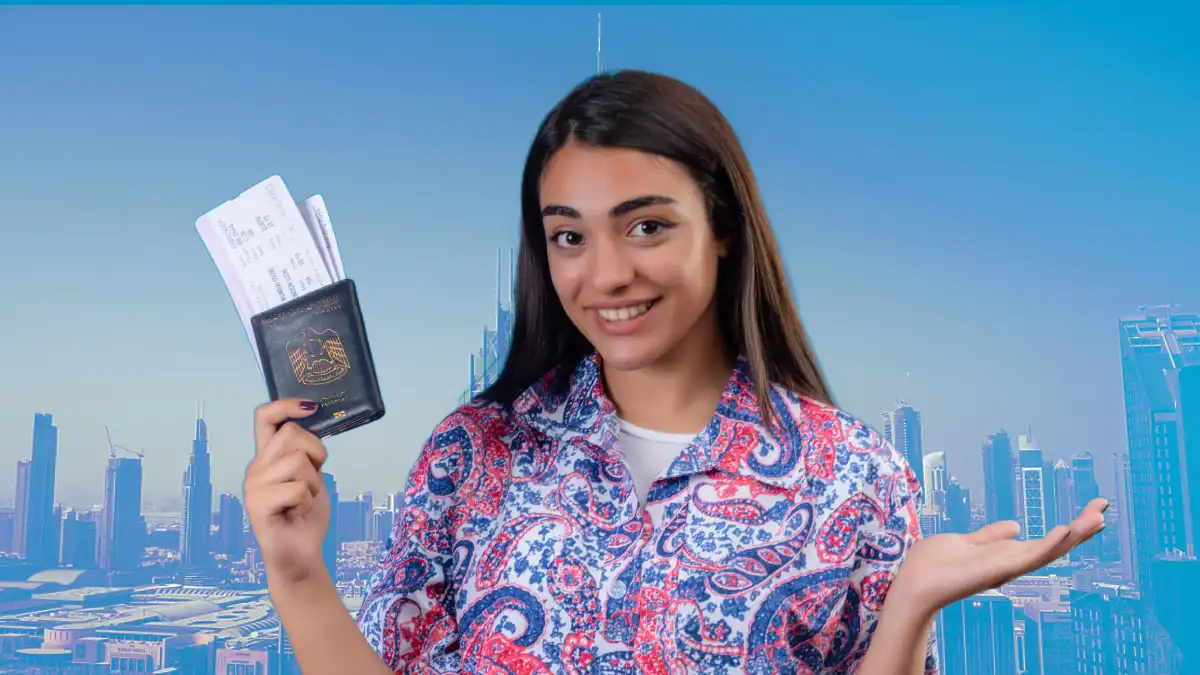The Unified Identification Number (UID) is basically a unique number in the UAE’s immigration, visa and administrative documents. This number is automatically assigned to any individual who is travelling to Dubai, whether as a tourist, resident, or worker. It is simply an authentication method that keeps the government process smooth. In this article, we’ll explore what a UID is, its purpose, how it is issued, and why it is so important in the UAE for you.
Also Read: UAE E-Channel System: Streamlining Immigration and Residency in 2025
What is the Unified Identification Number (UID)?
To keep it simple, the UID is a unique 9-15 digit number that is automatically assigned to every individual who enters the UAE with a valid visa, whether for tourism, employment, residency, or other purposes. This number is issued by the General Directorate of Residency and Foreigners Affairs (GDRFA) and regulated by the Federal Authority for Identity, Citizenship, Customs, and Port Security (ICP). Don’t treat it like a visa number, which changes with renewals or status updates; the UID remains permanent, even if you leave the country and come back again.
Structure of the UID
So, this is a little bit technical, but the UID is structured to provide specific information about the visa holder, and each section of the number denotes something.
- First three digits: Indicate the city where the visa was issued (e.g., 101 for Abu Dhabi, 201 for Dubai, 301 for Sharjah, 401 for Ajman, etc.).
- Next four digits: Represent the year the visa was issued.
- Final 7-9 digits: This is unique, and it totally depends on sequencing and other documents.
- This structured format ensures that the UID carries essential details about the visa holder’s entry and status.
Your Unified Identification Number plays a central role in visa and residency processes. For personalised guidance, our visa services are here to assist you every step of the way.
Purpose of the UID
So far, the UID has been introduced to simplify the UAE’s immigration and administrative systems. Its purposes include.
Also Read: What are the New Visit Visa Rules in the UAE 2025
- Immigration and Residency Tracking: The UID keeps track of all the immigration records, including entry and exit history, visa applications, and residency permits, under a single identifier.
- Visa Processing and Renewals: The UID simplifies visa applications, renewals, and extensions and reduces a lot of paperwork.
- Link to Emirates ID and Official Documents: The UID is technically linked to the Emirates ID and other residency documents. Making it quite easy for the authority to integrate personal records for official services
- Business Setup: The UID is also essential for company registration and licensing
- Prevention and Security: The UID helps prevent identity fraud and enhances security through biometric integration (e.g., fingerprints, facial recognition) that is directly linked to immigration records.
Where to Find Your UID?
You can easily find your UID on official documents. We have mentioned the list of documents below.
- Residence Visa: The UID is printed on the visa sticker in your passport.
- The UID may appear on the entry permit issued upon arrival
- The UID is included in Emirates ID application forms and records
- You can retrieve your UID through the GDRFA’s Unified Number Inquiry Service or the ICP portal. To do so:
- Visit the GDRFA or ICP website.
- Select “Find Unified Number” or a similar option.
- Enter your passport number, nationality, date of birth, and gender.
- Solve any verification step.
- Submit to view your UID.
Also Read: A Quick Guide to Open an Emirates NBD Account in 2025
Tips for Managing Your UID
- Keep It Accessible: Note down your UID and store it securely, as it’s required for many transactions.
- Check Documents: Always verify your UID on your visa or Emirates ID to ensure accuracy.
- Resolve Errors Promptly: If you suspect multiple UIDs or discrepancies, contact GDRFA or ICP immediately to avoid delays in services.
- Use Official Portals: Rely on GDRFA or ICP websites for UID retrieval to ensure data security.
- Seek Expert Help: For complex cases, especially for business setup or visa issues, consult professionals like Universus Consulting to streamline the process.
Conclusion
The Unified Identification Number (UID) is a cornerstone of the UAE’s immigration and administrative framework, serving as a permanent, unique identifier for every individual entering the country. Whether you’re a tourist, resident, or entrepreneur, understanding your UID is essential for accessing government services, managing residency processes, and ensuring compliance with UAE regulations.
